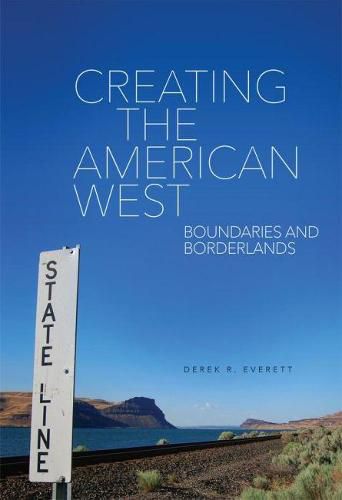Readings Newsletter
Become a Readings Member to make your shopping experience even easier.
Sign in or sign up for free!
You’re not far away from qualifying for FREE standard shipping within Australia
You’ve qualified for FREE standard shipping within Australia
The cart is loading…






Boundaries - lines imposed on the landscape - shape our lives, dictating everything from which candidates we vote for to what schools our children attend to the communities with which we identify. In Creating the American West, historian Derek R. Everett examines the function of these internal lines in American history generally and in the West in particular. Drawing lines to create states in the trans-Mississippi West, he points out, imposed a specific form of political organization that made the West truly American.
Everett examines how settlers lobbied for boundaries and how politicians imposed them. He examines the origins of boundary-making in the United States from the colonial era through the Louisiana Purchase. Case studies then explore the ethnic, sectional, political, and economic angles of boundaries. Everett first examines the boundaries between Arkansas and its neighboring Native cultures, and the pseudo war between Missouri and Iowa. He then traces the lines splitting the Oregon Country and the states of California and Nevada, and considers the ethnic and political consequences of the boundary between New Mexico and Colorado. He explains the evolution of the line splitting the Dakotas, and concludes with a discussion of ways in which state boundaries can contribute toward new interpretations of borderlands history.
A major theme in the history of state boundaries is the question of whether to use geometric or geographic lines - in other words, lines corresponding to parallels and meridians or those fashioned by natural features. With the distribution of western land, Everett shows, geography gave way to geometry and transformed the West. The end of boundary-making in the late nineteenth century is not the end of the story, however. These lines continue to complicate a host of issues including water rights, taxes, political representation, and immigration. Creating the American West shows how the past continues to shape the present.
$9.00 standard shipping within Australia
FREE standard shipping within Australia for orders over $100.00
Express & International shipping calculated at checkout
Boundaries - lines imposed on the landscape - shape our lives, dictating everything from which candidates we vote for to what schools our children attend to the communities with which we identify. In Creating the American West, historian Derek R. Everett examines the function of these internal lines in American history generally and in the West in particular. Drawing lines to create states in the trans-Mississippi West, he points out, imposed a specific form of political organization that made the West truly American.
Everett examines how settlers lobbied for boundaries and how politicians imposed them. He examines the origins of boundary-making in the United States from the colonial era through the Louisiana Purchase. Case studies then explore the ethnic, sectional, political, and economic angles of boundaries. Everett first examines the boundaries between Arkansas and its neighboring Native cultures, and the pseudo war between Missouri and Iowa. He then traces the lines splitting the Oregon Country and the states of California and Nevada, and considers the ethnic and political consequences of the boundary between New Mexico and Colorado. He explains the evolution of the line splitting the Dakotas, and concludes with a discussion of ways in which state boundaries can contribute toward new interpretations of borderlands history.
A major theme in the history of state boundaries is the question of whether to use geometric or geographic lines - in other words, lines corresponding to parallels and meridians or those fashioned by natural features. With the distribution of western land, Everett shows, geography gave way to geometry and transformed the West. The end of boundary-making in the late nineteenth century is not the end of the story, however. These lines continue to complicate a host of issues including water rights, taxes, political representation, and immigration. Creating the American West shows how the past continues to shape the present.